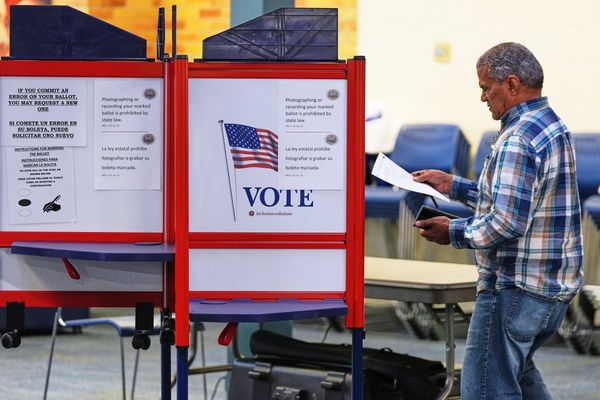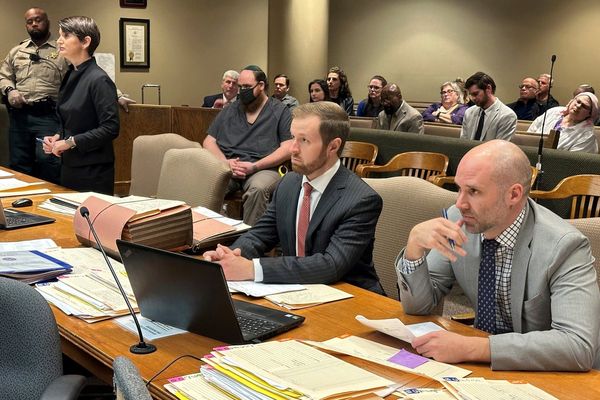
Elon Musk has said his $44bn (£36bn) takeover of Twitter is “temporarily on hold” in a tweet that rocked the company’s share price and cast doubt on whether the deal will happen.
The Tesla chief tweeted on Friday morning that the deal was being frozen while he awaited details supporting Twitter’s assertion that fewer than 5% of its users were spam or fake accounts. In a subsequent tweet, Musk said he was “still committed to acquisition”, amid speculation that the world’s richest man was about to walk away from the deal or seek a lower price.
Musk later claimed that he would conduct a “random sample” of 100 Twitter followers to investigate the issue.
Twitter deal temporarily on hold pending details supporting calculation that spam/fake accounts do indeed represent less than 5% of usershttps://t.co/Y2t0QMuuyn
— Elon Musk (@elonmusk) May 13, 2022
The announcement left analysts and observers scratching their heads, prompting some to ask if the eccentric billionaire was trying to exit the deal or renegotiate it. Musk and Twitter have signed an agreement that includes a $1bn break fee payable by the Tesla CEO if he walks away, although it also includes a “specific performance clause” that a judge can cite to force Musk to complete the deal at the agreed price of $54.20 per share.
“I suspect he wants to use the threat (legally weak) that the disclosure about bots on the platform results in a failure of a Twitter representation (it doesn’t) and then push for a renegotiation,” said Brian Quinn, an associate professor at Boston College Law School. “That’s hardly an original thought and this is not an uncommon strategy. If the Twitter board has a spine it will just say no and sit on its rights under the agreement.”
Still committed to acquisition
— Elon Musk (@elonmusk) May 13, 2022
Musk announced the hold on the Twitter takeover alongside a link to a Reuters article published on 2 May that referred to a filing with the US financial regulator, in which Twitter claimed that false or spam accounts represented fewer than 5% of its 229 million daily average users. The filing does not appear to contain new information on spam accounts, however, with previous quarterly filings going back to 2014 also referring to the “fewer than 5%” figure, albeit with the caveat that the true number could be higher.
The move comes a day after Twitter announced the departure of two top figures at the company in an internal shakeup. The Musk takeover plan has prompted a backlash among both Twitter users and staff.
Meanwhile, the Tesla CEO has been looking for additional investors to support the deal, the Washington Post reported, as Tesla’s stock price has weakened. Musk’s Tesla stake is a key component in his financing of the deal, with fears that he will sell or pledge more of them contributing to pressure on the share price. Tesla shares have lost a quarter of their value in the last month, and have fallen from about $1,150 in early April when Musk confirmed he had taken a huge stake in Twitter, to $769.59 on Friday.
Musk has already secured more than $7bn (£5.7bn) in outside funding from a group of investors that includes the tech tycoon Larry Ellison, a Saudi prince, the Qatar state investment fund and the world’s biggest cryptocurrency exchange. Musk’s net worth, estimated by Forbes earlier this week at $240bn, was $232 bbn as of Friday.
“We’d always said he may cut or run or change his tune at the 11th hour and 59 minutes and 59 seconds on the clock. It is farcical,” said Neil Campling, head of technology research at Mirabaud Equity Research. “He has never had the full funding. We know that from his constant attempts to get financial support, but he also held all the cards.”
Musk’s tweet on Friday sent Twitter’s shares down nearly 10% to $40.71 when Wall Street closed, on concerns that the deal could collapse. Musk will probably be legally bound to either follow through with the deal or pay the fee, said Art Hogan, the chief market strategist at National Securities.
“Saying it’s temporarily on hold is not standard operating procedure when you’ve made a tender offer for a company. It’s confusing and also nonsensical. It just doesn’t hold up,” said Hogan.
US short-selling firm Hindenburg Research, which takes bets against companies’ share prices, said this week that Musk could submit a lower bid for Twitter, owing to a slump in tech stocks and a weak financial performance at the social media platform.
Dan Ives, an analyst at Wedbush Securities, a US financial services firm, said: “The implications of this tweet will send this Twitter circus show into a Friday the 13th horror show as now the Street will view this deal as 1) likely falling apart, 2) Musk negotiating for a lower deal price, or 3) Musk simply walking away from the deal with a $1bn breakup fee.”
Musk has railed against automated or “bot” Twitter accounts – which are not run by human users – and said after announcing the takeover that he wanted to improve the platform by “authenticating all humans”.
Twitter allows automated accounts on its platform, ranging from disaster early warning systems to algorithmic art. In 2021, it introduced an “automated account” label to publicly mark such accounts as being run by a computer, not a human. But those accounts need to follow strict rules and can lose access if they misbehave.
One such automated account may even have been the driver for Musk’s initial purchase of Twitter stock. Created by a 19-year-old aviation enthusiast, the @elonjet Twitter feed tracks and automatically tweets the location of Elon Musk’s private plane, taken from public flight tracker data.
In January, Musk offered the teenager $5,000 to buy the account and shut it down, declining the creator’s $50,000 counter-offer. A few days later, he began purchasing Twitter stock, filing his legal declaration that he own a substantial stake in early April.
But declared automated accounts such as @elonjet are far outnumbered by spam accounts, which deliberately break Twitter’s terms of service in pursuit of commercial or political goals.
Such accounts may use the reply function or direct messages to send adverts or scams to other users, or they may represent attempts to influence the public discourse by tweeting political propaganda.
Other fake accounts exist purely to boost the metrics of individual users, who can buy followers, likes and retweets from “bot sellers” who control thousands or millions of fake accounts.
“Bots massively multiply the ability of one person to attempt to manipulate people,” Samuel Woolley at Oxford University said after the launch in 2017 of a report into social media manipulation. “Picture your annoying friend on Facebook, who’s always picking political fights. If they had an army of 5,000 bots, that would be a lot worse, right?”
Agencies contributed reporting







